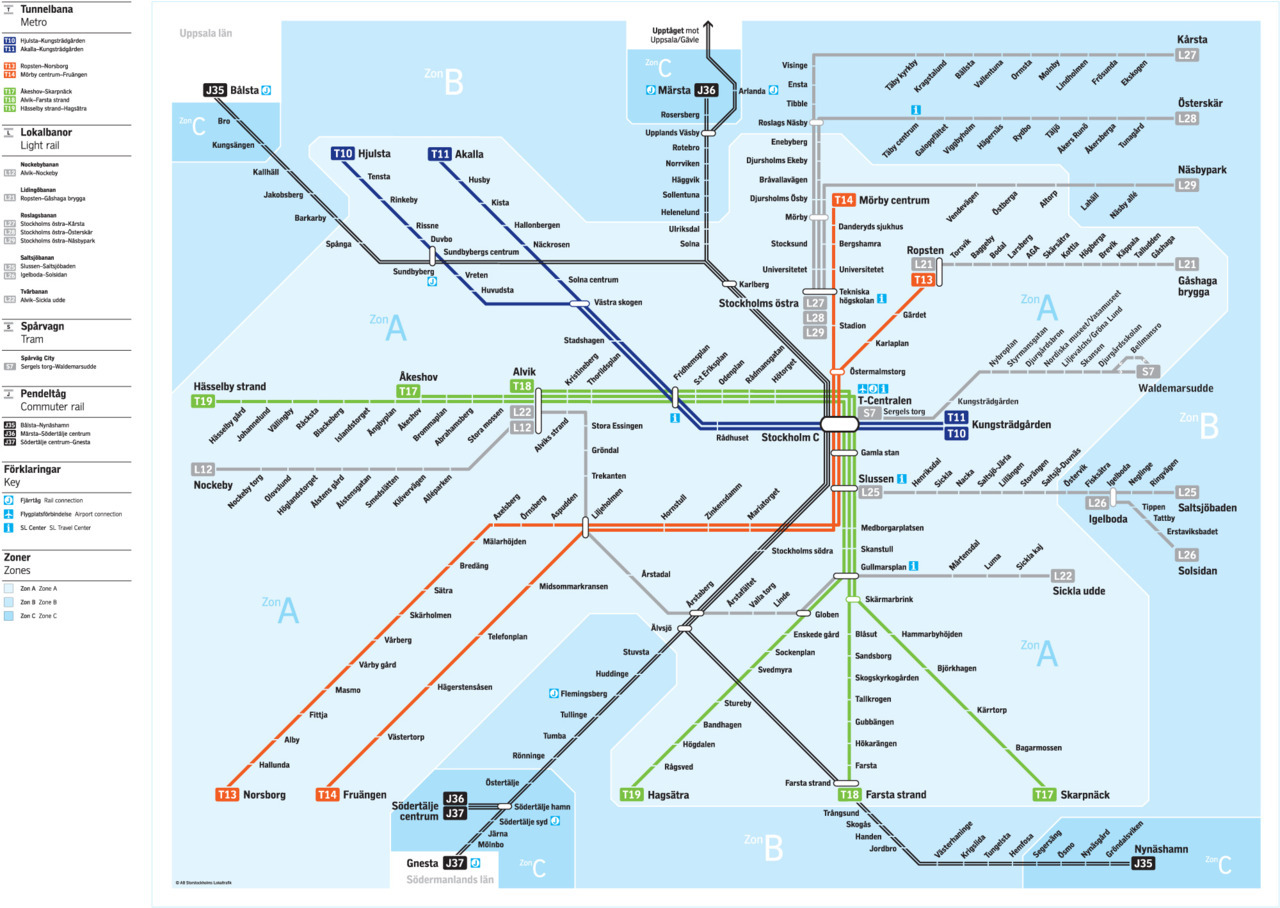 |
| My favorite metro; Stockholm's. It's practically already a minimalist board game... |
So... I'm sort of surprised that an idea for game-ifying this hadn't occurred to me. Or anyone, apparently. Which is why I find myself playing just another round of Mini Metro to get screenshots for this article. Yep. Just for the screenshots.
 |
| This is how your city starts. |
The gameplay is very simple. Each of the shapes (circle, square, triangle), is a metro stop. The blue squiggle is a river. On the left, you can see that I have 3 lines (red, yellow, and blue) with which to connect the stops, as well as 3 tunnels that let you cross the river.
 |
| After connecting the stops. |
I'm now using 2 of my 3 lines, and 1 of my 3 tunnels. And I have my first passenger! The filled black square at the circle stop is a passenger that wants to get to any square-shaped stop. Stations are guaranteed to never generate passengers that want to go to a stop of their type. I also now have trains moving along the lines to ferry people.
 |
| A minute or so into the game. |
Stations get added over time, mussing up any plans you had for a clean metro system. Each station type has a relative frequency (i.e., circles are the most common, then triangles, then squares, then other stations). Routes can be re-drawn and adjusted as time goes on.
 |
| I still haven't decided which are best at which points in the game. |
Every few minutes, you're presented with 3 randomly chosen upgrades (out of a pool of 6 or so), and asked to choose one.
 |
| Uh oh... |
If a station is over holding capacity for too long, you lose.
 |
| Game over! 911 passengers moved. |
And here's my finished metro at the point I lost. The top-left-most station was the cause of the loss, but the game was tenuous for about a minute before losing.
So... That's how to play, but I haven't even scratched the surface of why this is such a fascinating game for me. It's fascinating because it's such pure and simple system, but, despite its simplicity, I still haven't been able to 'break' the game. Each game, I learn something; somewhere in my third game, it dawned on me that alternating stop types was highly advantageous. A game later, I had basic rules for when to construct a linear track, and when to construct a circular one. A game later, I pioneered building 'value circulators' (circular tracks that hit one-and-only-one of each stop type, focusing on the rare occurrence ones).
My best score was just south of 1500, but every time I play a new game, I feel like I have options and meaningful choices. I've built metros consisting of little circular cells, I've built metros consisting on long linear tracks in a radial pattern, I've built hybrids of the two, I've built spiderweb metros. I've upgraded things in different orders, played with focusing on one type of upgrade or diversifying. And I still haven't made substantial progress in understanding the game's strategy, let alone 'cracking' it. Usually, a system this simple feels like it should be intelligible, and then solveable, in less than ten or twenty plays, but something about this game is elusive and taunting.
On top of that, the game's pacing is ideal. The first few minutes are a calm, relaxing experience, before the game starts quietly reminding you that this isn't an easily solved puzzle. People start to flood in, stops are added in horrible locations, and rare types of stops appear in unfortunate places. The pacing oscillates between frenetic and terse; after a certain point, even when the metro is working flawlessly, I find myself with my guard up, ready to respond to the next crisis.
But at the end of the day, it's just fun. Maybe it's the computer scientist in me that loves it, enamored with graphs and concurrency, silently imagining each of my passengers as the traveling salesman. Maybe it's the traveler in me that loves it, imagining the metro as an exploration, wondering what art is at a given stop, and where to get off to find cheap dumplings. And maybe part of the appeal is the meta metro: building metro stations in a metro station, waiting on Stockholm's tunnelbanan...
No comments:
Post a Comment